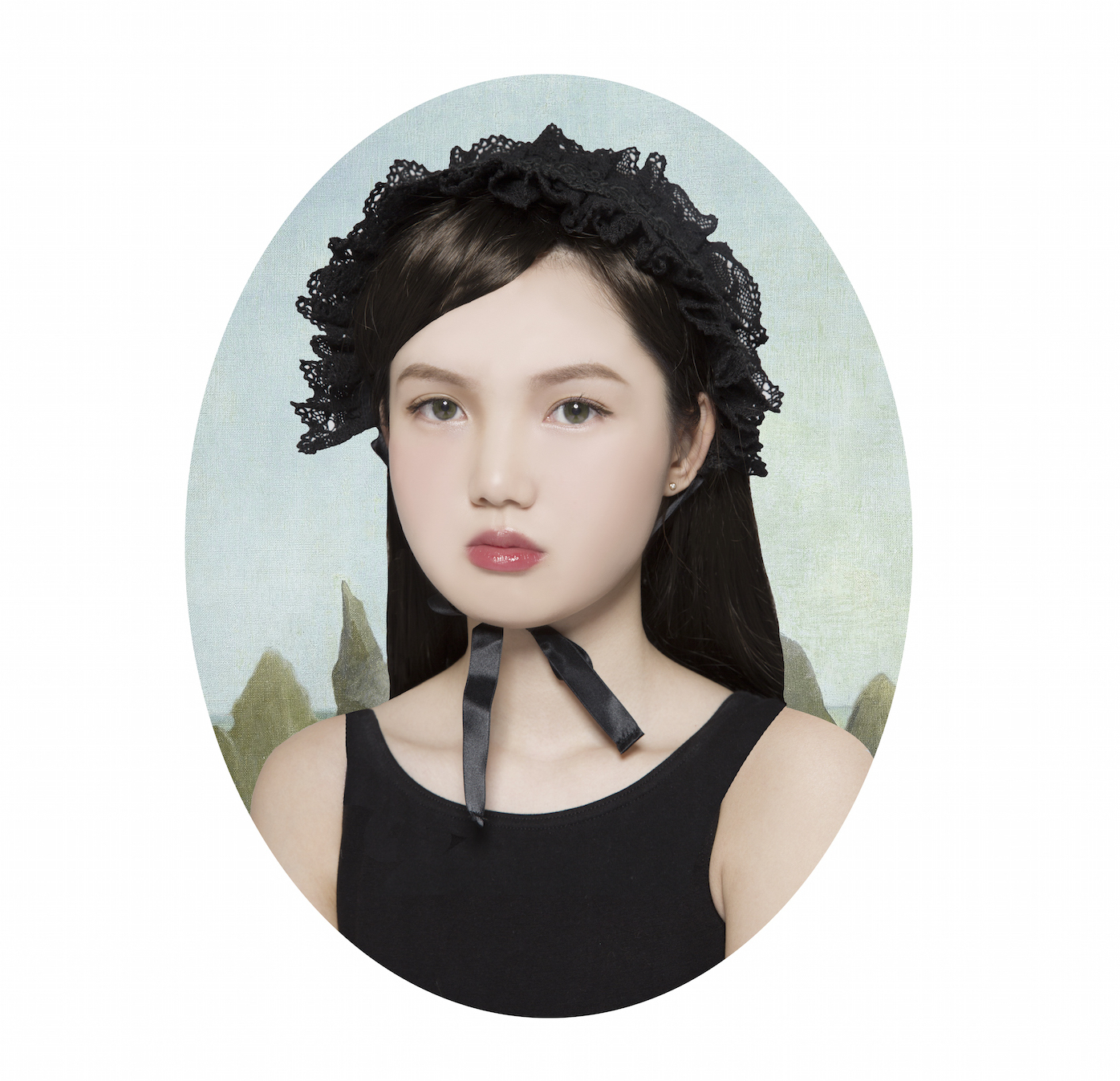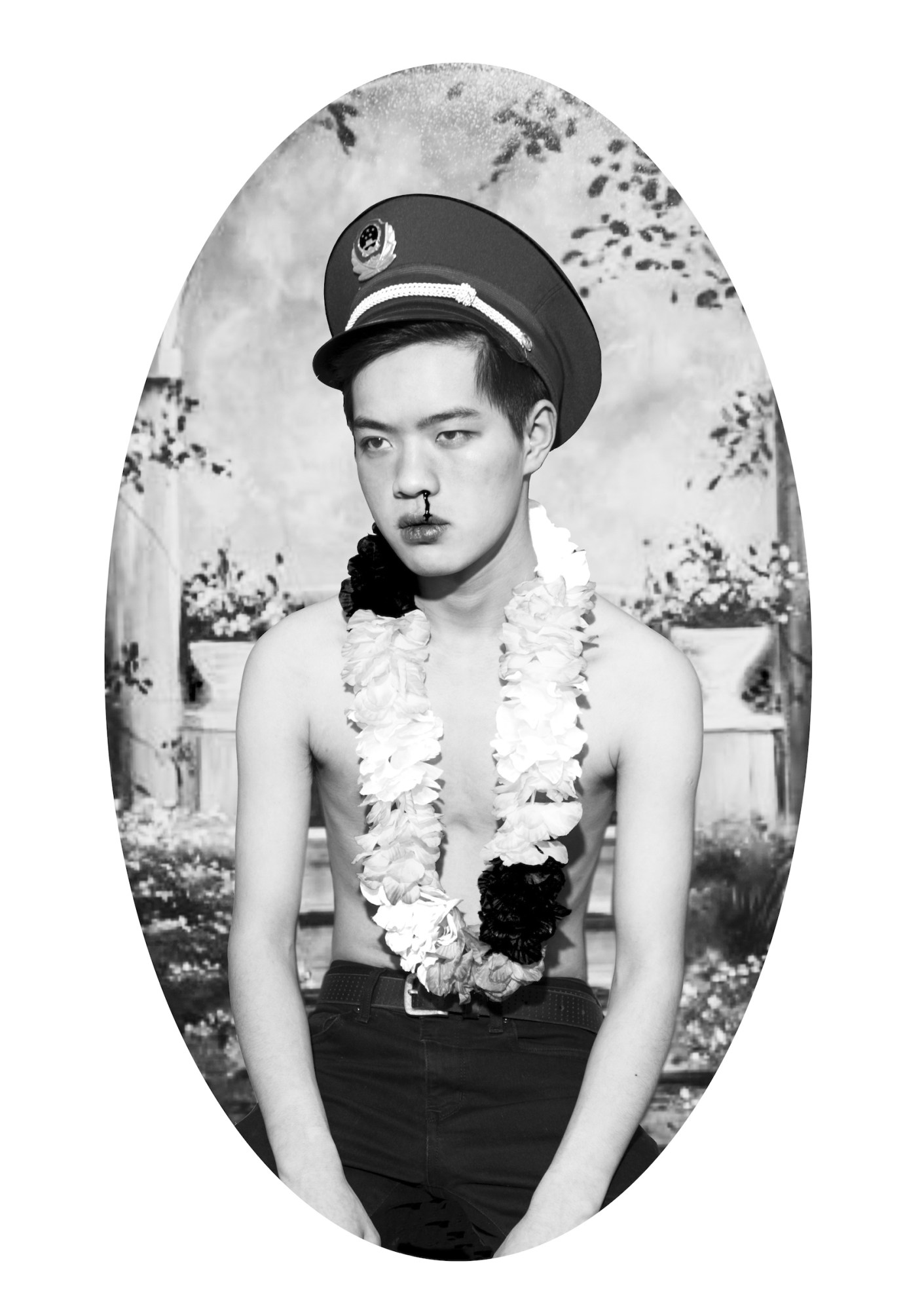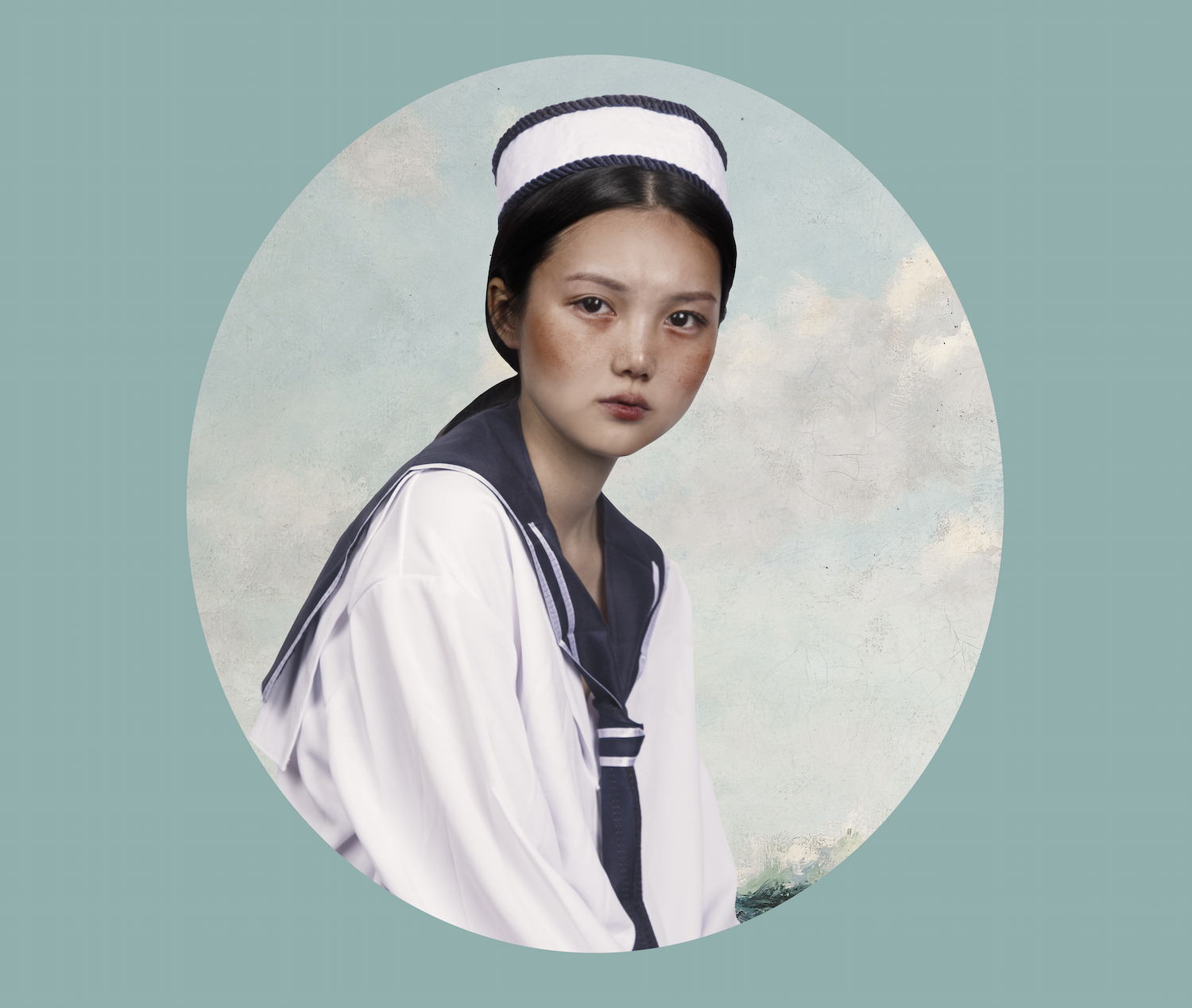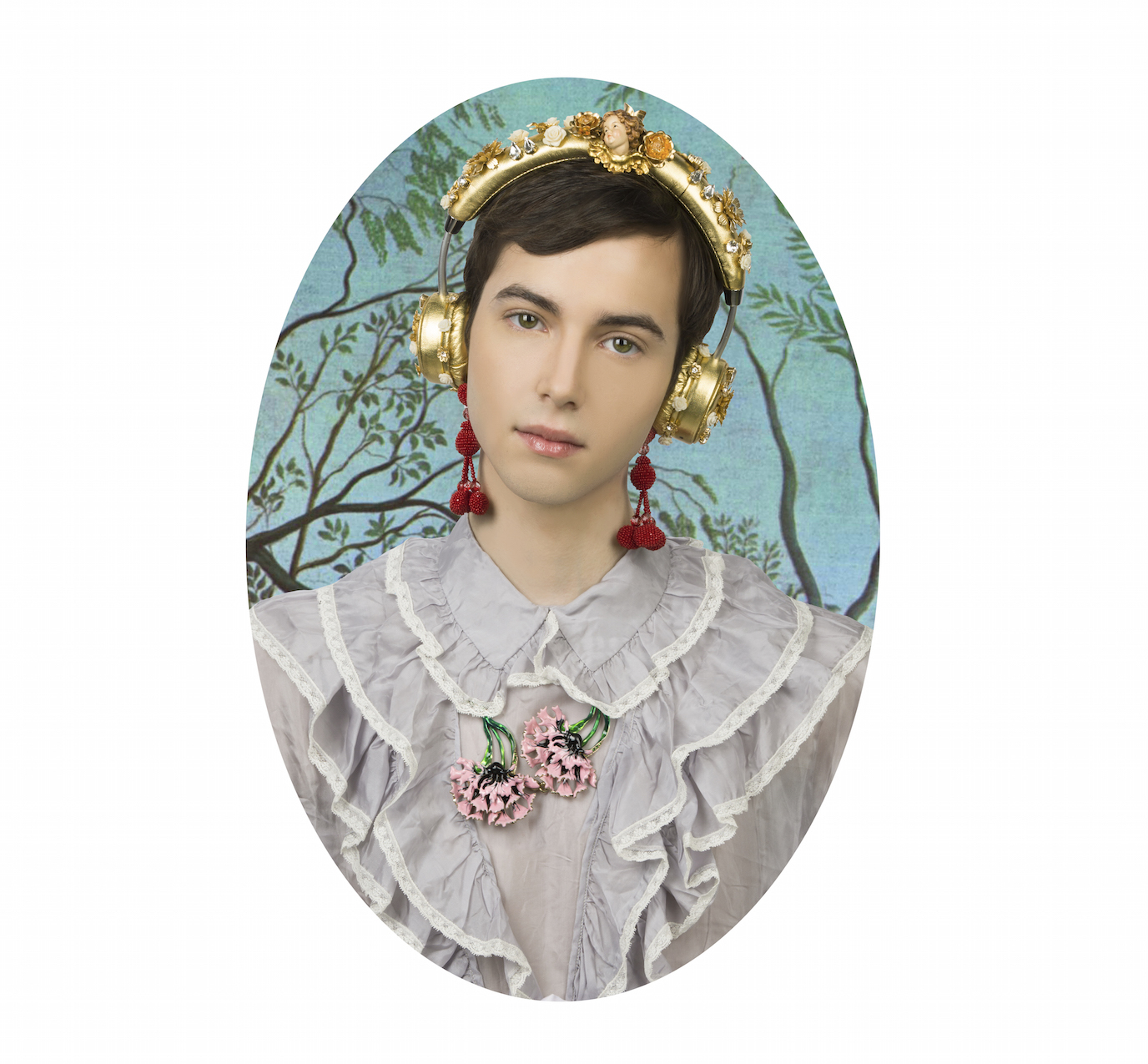Hailun Ma really loves The Sims. The China-born, Brooklyn-residing photographer plays the video game the same way she approaches her art: creating worlds and characters that reflect her own desires, prejudices, and subconscious behavior. Hailun’s other influences range from the obvious — she’s heavily influenced by the character portraits of Cindy Sherman — to the images she consumes in every life, including 90s music videos, awkwardly posed family photos, and the equally cheesy “after” pictures in the windows of barber shops. She’s also an excellent stylist. In the radically exquisite series Imagination Portraits, a young Asian boy with a bleeding nose glowers in a soldier hat and floral garland, a white teen boy softly smiles in a ruffled blouse and elaborate gold headphones (Dolce & Gabbana?), and porcelain-skinned girls pose regally in spandex and swim caps. Hailun frequently inserts herself into the oval frames — a nod to Renaissance paintings — to explore Asian beauty standards and stereotypes, as well as gender roles, class, power, and sexuality. We talked to her about dream worlds, Chinese glamor shots, and why The Sims is so profound.

How do you see beauty norms and expectations in China compared to in the U.S.?
In China, beauty is associated with purity and innocence. Women who act cute, gentle, and vulnerable are considered more attractive to men. In terms of appearances, big eyes, fair skin tone, and V-line shaped faces are generally popular in Asia. Here in the U.S., I feel like the beauty norms are more diverse. Sexy and strong features are popular. For instance, bigger lips and defined cheekbones are often emphasized.
You photograph people of many different ethnicities, religions, and genders. How do you come up with characters for each person?
My work references the pictorial conventions of portraits from my Chinese background as well as my female identity. In each image, I create a character and a dream world, exploring and suggesting topics that interest me, such as beauty standards, female roles, class, power, and sexuality. I draw inspiration from my personal experiences, interests in Renaissance paintings, and contemporary culture.

What is your relationship to your physical appearance outside of art?
I was self-conscious about my appearance in middle school. My skin was too tan and my face was not small enough. Also, my best friend was the prettiest girl in school. To be honest, it was upsetting, especially because there was no role model or inspiration for me to look up to in the media at that period. However, as I was growing up, I realized that my skin tone or my face shape should never have bothered me: I now think my darker skin tone fits me well and I like it that way. Yes, I would love to be prettier, but I am happy about what I have.
How did paintings and portraits of women shape your identity growing up?
On my mom’s side of the family, people love to have their pictures taken. Growing up, I was always having my picture taken in a photo studio, dressed up in different themed outfits and in front of various backgrounds. Now it feels almost like cosplaying. The photos are called YiShuZhao, a very popular form of photography in China. That was my first encounter with photography and I have been fascinated and inspired by those photos. Fun fact: I used to have a repainting of Princess Margarita [of the artwork “Infanta Margarita Teresa in a Blue Dress”] hanging on my bedroom wall and it would be the first thing I saw when I woke up every morning for over 10 years until we moved.

I saw that you recently interned at Re:Quest model agency. What was it like for you shooting fashion models as opposed to friends?
Models know what their body and face look like from certain angles, and I believe a good model is key to the shoot. When I shoot, I don’t see my models as models — I just see them as people, since my work is more about creating a character and a narrative, I don’t feel much difference with shooting friends.
Do you think fashion photography can challenge stereotypes and preconceptions in the same way art can?
Yes. I don’t think there is any distinct line between fashion photography and fine art photography anymore. For me, fashion photography is a very powerful platform to broadcast one’s ideas and aesthetics. It plays a huge role in shaping and understanding what is relevant in our culture nowadays.

I love that you are doing a series about The Sims. Why are you so drawn to this game?
I really love playing The Sims; I spend so much time in that game, just to build a house and a character rather than play it. I am interested in the idea of creating a world and character. One day I realized the way I play the game is really like my approach to photography. It provides a virtual space, and I could use it to help me manifest ideas without worrying about the limited resources I have in real life. Moreover, the game itself is really interesting and profound. It simulates our everyday lifestyle and the basis of society. And it gives freedom to players, making them designers of their own world in the game. Their way of playing the game reflects their own characters, ideologies, and even subconscious behavior.
Credits
Text Hannah Onlgey
Photography Hailun Ma
